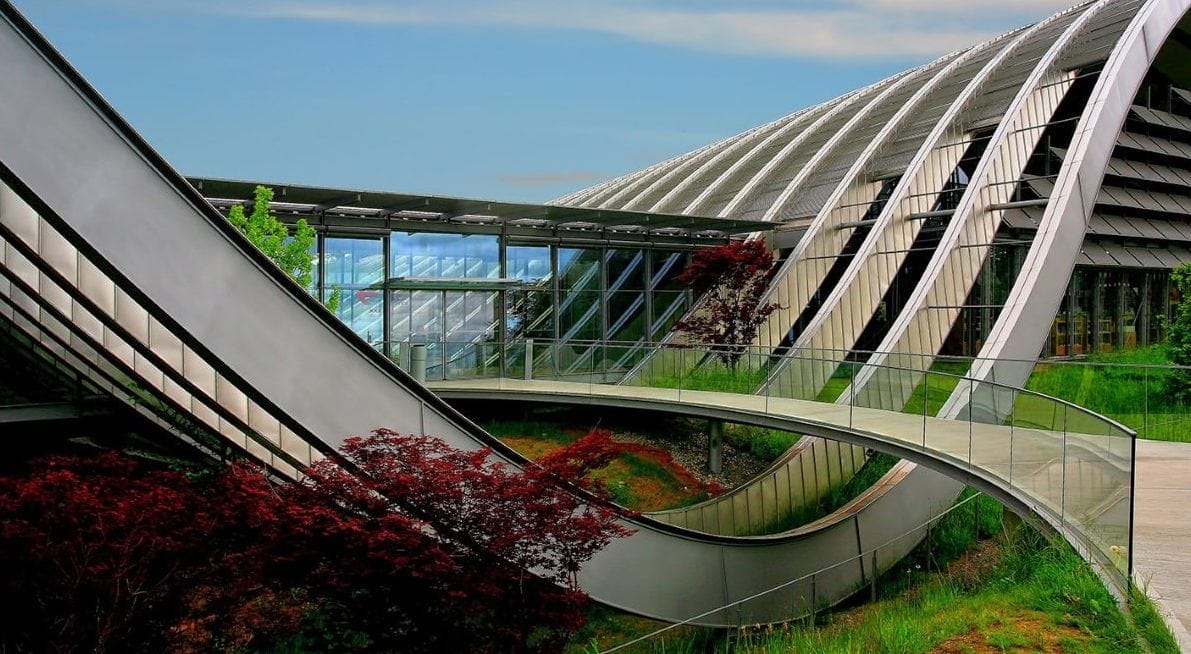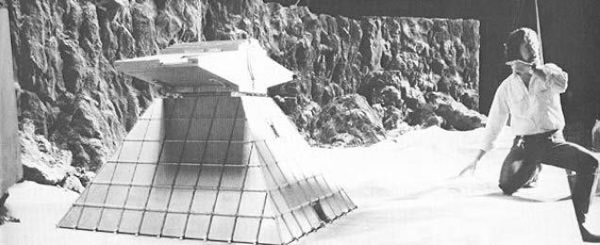
Science fiction tales are a perfect way to travel to the future without aging along the way. These books, stories, movies, and videogames have allowed us to experience everything from dystopian, post-apocalyptic worlds to dream worlds beyond our reach because of how utopic they are. These stories then put a lot of emphasis on narrative, but are there some real-life aspects of architecture in science fiction? Did their designs get it right?
Architecture is an indispensable element for these tales. How often does bad green-screen distract us from the plot? It turns out that different elements give a movie a realistic, consistent feel. Every human story happens in or around some form of construction. In this article, we’ll take a look at some iconic science fiction movies from an architectural point of view.
Dune, Star Wars, Star Trek – did they do a good job building galactic empires?
In 1977, “Star Wars: A New Hope” appeared in movie theaters. It was one of the first modern blockbusters of science fiction. In it, we met a young Mark Hamill living in a cave dwelling in Tatooine. In reality, the buildings belong to a hotel in Matmata, a desert in Tunisia. From then on, the number of places where we find ourselves doesn’t slow down: imperial ships, desert towns, the Yavin moon (below, in Guatemala).

Source: Unsplash | Author: Ricardo Gomez Angel
If we leave out the casual detail of artificial gravity or the construction of the Death Star, what’s for certain is that Star Wars, ‘Star Trek’ (1979), and ‘Dune’ (1984) are sagas that have kept some level of respect for architectural norms. In fact, many of their movies were filmed in real locations. Others, as you can see below in David Lynch’s set, not so much.

Even so, no building or spaceship can totally escape the basic rules of architecture. Even in the films just mentioned, load sharing, for example, is seen in the form of columns or beams. Above, we can see how a ziggurat-shaped building uses divisions for different panels instead of a smooth, unrealistic surface.
The digital worlds of Tron, The Thirteenth Floor, and The Matrix
The original ‘Tron’ movie (1982) showed us a digital world that wasn’t all that different from the one we perceive all around us. Even though the budget and technological capabilities limited the movie’s set from being shown in high definition, The Network had its own topography and buildings. All with a neon look and graphics typical of the eighties that we find horrible today, but that were a hit at the time.
https://giphy.com/gifs/space-lights-lab-Fa7CZzuodviRa
Years later, “Tron Legacy” (2010, above) showed us a Network that had evolved in a much more realistic way. Computer-generated graphics had gone from lasting just a few minutes to practically the whole movie long, and in it the buildings and cities don’t look so different from European or American ones. But with less Sun to light up the sky that is in permanent shadow.
These were nowhere near the only movies that featured simulated environments. In the year 1999 alone, the cult classics, ‘eXistenZ’, ‘The Matrix’ and ‘The Thirteenth Floor’ were released. In each of these, the virtual environments look so real that they are, in fact, on-set recordings. As such that, for this group, we can confirm that the buildings are realistic. So much so that they’re standing in real life.
And what about space colonies?
The present is easy in architectural terms. But what about when we build space colonies? “Moon” (2009) is one of those little-known works of art. It shows us the day to day of the only astronaut on a lunar headquarters.
In this location, architecture is measured in a very detailed fashion. Everything from the thick walls to the communications antennas are designed with care. Even things like how the wall panels of the cockpit are disassembled were thought out for the movie.
https://giphy.com/gifs/moon-misc-qL5M5MqN6YF20
But Sam Rockwell’s movie isn’t the only one that deserves special attention for its architectural realism in space colonies. At least, not if we’re considering the architecture put together for modules we see in films like ‘The Martian’ (2015) or fictional documentaries like ‘Mars’ (2016).
In ‘Mars,’ the architectural steps needed to build a Martian colony are laid out in detail. The viewer learns the importance of having stone overhead to protect ourselves from radiation, or why a cave is better than camping outdoors.
Arrival: when we don’t understand architecture
‘Arrival’ (2016) is one of the strangest science fiction movies made to date. In it, the extraterrestrials don’t come to harm us, and the lead role is an expert in linguistics. In addition, the movie’s architecture is beyond remarkable.
Unlike ‘Abyss’ (1989), ‘Independence Day’ (above, 1996), ‘District 9’ (2009) or ‘Prometheus’ (2012), movies where we can understand the space aliens’ architecture, ‘The Arrival’ leaves us in the dust. Its architecture is so enigmatic that even at the end of the movie we still can’t decipher it.
https://giphy.com/gifs/l0HlSltRd3pwQ7c08
The heptapods’ spaceship is a dark oval with no sort of opening except a small gate at its base. We know little about its interior, except that the walls are smooth and unadorned with no lights or handles. Our buildings, for example, have rails and other safety elements. We don’t know about theirs. If ‘The Arrival’ is interesting, it’s because it opens the door for a new type of architecture.
Idiocracy, when buildings aren’t kept up
It’s impossible to end this article without a humoristic nod to ‘Idiocracy’ (2006), a comedy with science fiction undertones. The lack of upkeep is one of its most outstanding details in terms of construction. The movie takes us to the year 2505, when humanity’s level of intellect has stagnated. So much so that they’ve forgotten how technology works. They therefore can’t repair a bridge, for example.
https://giphy.com/gifs/idiocracy-mike-jude-l0MYIv8kMQna584CI
The direct consequences are leaks in every building (some of them are missing parts of the roof), no urban waste management to speak of, and architecture that is falling to pieces. It’s helpful to take a look at this movie not for its plot (which is average leaning toward basic), but for the way in which in reflects the importance of building maintenance. We often forget the most essential things.




There are no comments yet